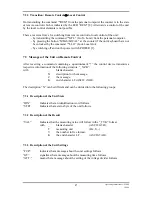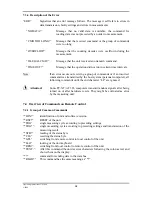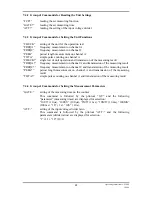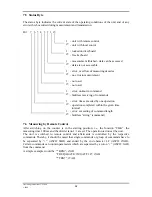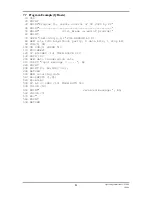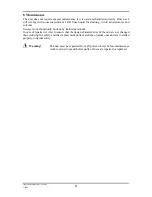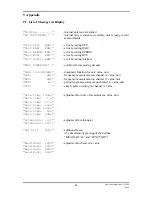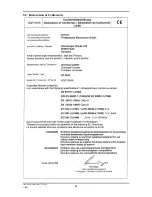
(7)
“MEAS/LOCAL” button
On pressing this button the function menu is left and the respective measurement is
started.
(8)
“REM” display
The LED lights up if data is transmitted via the serial interface RS-232C.
(9)
16-digit LCD display
See 4.5.
(10)
BNC input socket: channel A
Measuring signals with frequencies up to 100 MHz can be led to this input.
Furthermore, period length measurements and the simple pulse counting can be
carried out via this channel.
(11)
Potentiometer “TRIG”
The desired trigger level can be set by turning the potentiometer to the left for
negative values on triggering to falling edge, or to the right for positive values on
triggering to rising edge.
(12)
Display “10:1”
The LED lights up if the input voltage divider was set to the ratio 10:1.
(13)
BNC input socket: channel C
Measuring signals with frequencies of 50 MHz to 2.4 GHz can be led to this input.
This socket is only for frequency measurements.
(14)
Display “MIN”
The LED indicates an input voltage too low for channel C.
(15)
Display “MAX”
The LED indicates an input voltage too high for channel C.
Power is supplied by a
fused plug for non-heating appliances
. The unit is provided with a
fuse of T 100 L/250 V for 230 V~ or T 200 L/250 V for 115 V~ net voltage respectively. The
operating voltage indication
shows which operating voltage is to be used.
The serial interface
RS-232C
serve the purpose of data transmission on remote via external
devices.
The mains plug with fuse, the operating voltage indication, the interfaces and the
type plate
of the unit
can be found at the back of the counter.
13
Operating Instructions UZ 2400
1/2000

















